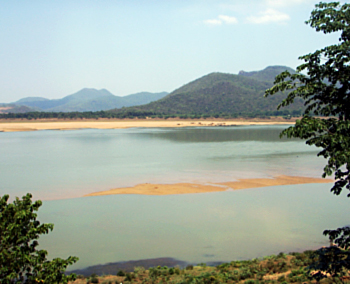 Administration of Chola dynasty was monarchical. The Chola Empire consisted of entire South Indian peninsula extending east to west from coast to coast, and bounded by an irregular line along the Tungabhadra River and the Vengi frontier in the north. The Chola dominion extended up to the banks of the Godavari River. The king was a benevolent dictator and the supreme commander. He issued oral commands to responsible officers when representations were made to him. In the tasks of administration and in executing his orders a powerful bureaucracy assisted the king. The justice of the orders of the King depends on the goodness of the man and in his belief in a sense of righteousness.
Administration of Chola dynasty was monarchical. The Chola Empire consisted of entire South Indian peninsula extending east to west from coast to coast, and bounded by an irregular line along the Tungabhadra River and the Vengi frontier in the north. The Chola dominion extended up to the banks of the Godavari River. The king was a benevolent dictator and the supreme commander. He issued oral commands to responsible officers when representations were made to him. In the tasks of administration and in executing his orders a powerful bureaucracy assisted the king. The justice of the orders of the King depends on the goodness of the man and in his belief in a sense of righteousness.
Role of the King in Chola Administration
All handles and levers of the administration were controlled by King as he enjoyed absolute power. Council of ministers and officials took active part in running the administration of Central Government. The higher officials were called Peruntaram and the lower officials were called Siruntaram. The Chola administration system was a highly centralised one. The feudal chiefs were kept away from administration. The government had a direct link with the peasants instead of the feudatories. The Chola kings had adopted the Yuvaraja during king`s rule. The orders of the kings were written and copies of it would be sent to respective departments and officers. The royal priest was the reliable advisor of the King.
Military Administration of Cholas
The Cholas had an efficient army and navy. The Chola army consisted of elephant, cavalry and infantry. Soldiers were given proper training. The army was divided into seventy regiments. With the help of their navy the Cholas controlled Coromandal and Malabar coasts. Bay of Bengal became the Chola Lake. The Chola army and navy together had huge trained soldiers. The armies of the tributary chieftains also joined Chola army at needy times. Generally the Chola army was led by the King or Yuvaraja. The king was the commander of army and navy which acted under his instructions. They helped the king in temple protection and revenue collection other than participating in a war.
There were officials of various grades organized in higher and lower ranks. Every village was a self-governing unit. The kingdom was divided into several provinces. They were again subdivided into kotaam, nadu, kurram and village being the lowest unit of the administration. The land revenue was core of public finance, thereby assessment of revenue being done carefully. Rajaraja I had introduced periodical land surveys. Tax exemptions were carefully noted. The village as a whole was responsible for payment of entire tax of a village. The other revenue sources were professional tax, salt tax, tax on goods and so on.
Revenue System under Cholas
State revenue was utilized in public works, in construction, maintenance of institutions and temples. Many irrigation projects were undertaken by the Chola kings like dam construction. Lake Cholagangam was an artificial reservoir build during the Chola rule.
Law and Order Under Cholas
Justice was mostly a local matter in the Chola Empire. Justice was administered through village courts, royal courts and caste panchayats. Minor disputes were settled at the village level. Punishment was in the form of fines or donation for some charitable purpose. Crimes such as manslaughter or murder were punished with fines. Crimes of the state, such as treason, were heard and decided by the king himself; the typical punishment in these cases was either execution or confiscation of property.
Local Self Government Under Cholas
Development of local self government was one of the most striking features of administration of the Chola dynasty. The villages were given autonomy despite centralised system of governance. The Chola officials acted as advisors to village assemblies and there was no interference in daily administration. Thus there was continuity in village administration despite political upheavals. The general assembly was classified into tax paying villagers, Brahmins and traders. The central government officers examined accounts and supervised the work of the tax paying villagers. The village assemblies received gifts from rich men or from king for developmental activities. The feudatories were unable to impede in the village management. Their job was very clerical in the sense it was a mere collection of taxes and passing the share to the King.
Elaborate and complicated mechanisms are the attributes of Chola administration. Administration under the Chola dynasty was systematically conducted. Autonomy along with centralization was moderately followed in each and every level. Revenue, justice, governance and military were given prior importance and supervised in a matured manner. The Chola kingdoms witnessed a disciplined bureaucracy.



















